Palaung State Liberation Front (PSLF),October 15, 2012
Brief introduction about Ta’ang people and the current conflict situation in the Ta’ang regions
Historical background of Ta’ang (Palaung) people:
According to history, Mon, Wa and Ta’ang(Palaung) people are part of the Mon-Khmar race and the first settlers in the region of Burma/Myanmar. The Ta’ang (Palaung) people at that time were independent and self-sufficient.
The Ta’ang people were scattered and resided in the Townships of Nam Sam, Man Ton, Man Kham, Muse, KutKhai, Lashio, Tebaw, Namtu, Kyaut Mae, Moe Maik, Moe Khot, Maing Long, Maing Shu, Maing Kai, Kalaw for thousands of years. The Ta’ang people still live work together in the areas of Nam San, Man Ton, Man Kham, south-east Muse, western parts of Kut Khai, Namtu, western and northern part of Kyaut Mae, eastern parts of Moe Khot and south-east parts of Mae Maik.
Over a thousand years ago, the Taung-Paing Saw Bwa (Regional Governor) governed the Ta’ang race. Palaung Saw BwaKhun Pan Sein, the last Saw Bwa of the Ta’ang people, was one of the leaders endeavoring to sign the Ping Long Agreement, the main source of the reunification of old Burma. The Taung-Paing Saw Bwa who governed the hilly regions of the Ta’ang people was the person who had a clear view on the current political trends of Burma. In 1958, he relinquished the throne and concluded the feudal governing system.
In the years of colonization in the southern regions, the Ta’ang people, together with other ethnic races, fought against the invaders. In the years of fighting for the Independence of Burma, Taung-Paing Saw Bwa Khun Pan Sein tried collaborating with General Aung San who was the pioneer of the struggle for independence. To make activities for national indication by peaceful means, he formed the Palaung Nationalities United League in 1946, but it was abolished by the Revolutionary Council, the military regime, in 1962.
In January 1963, the Palaung national force was organized and embarked on an armed revolution. Then, in 1976, the Palaung State Liberation Army was formed to defend the southern parts of the Palaung regions. But due to various circumstances, the PSLA had to sign a cease-fire agreement in 1991 and totally surrendered to the military regime in 2005. The Palaung National League for Democracy won seats in the general elections of 1990 in Nam Sam and KutKhai Townships but the military regime abolished PNLD later on. The Ta’ang National Party, TNP formed with the former party members from the former PSLA and won 6 seats in the parliament in 2010 election.
The Palaung State Liberation Front (PSLF):
The Palaung National Force was formed on 12th of January 1963. In 1976, the PNF was changed and reformed as PSLA under the leadership of Chairperson Tar Khon Taung. The PSLA lay down policies on the military, political, and organizational affairs under strong leadership and avid determination. Through the fierce battles of the military regime and under the four-cut operations, cease-fire negotiation had to be made on 21 April 1991. Using cunning and tricky the SPDC finally made the PSLA surrender on 29 April 2005.
Although the SPDC used trickery and brutal oppression, the spirit of Palaung People is still high and always active to fight in order to meet their destination. After the cease-fire agreement was signed between the PSLA and SPDC, some Palaung forces remained at Marnaplaw, the headquarters of ethnic armed forces and organizations. They did not go back to their mother unit and instead joined with the Karen and other allied forces in Marnaplaw. Through the help of NDF and other revolutionary forces, the PSLF was formed on 12 January 1992 and continued its path together with WNA to perform joint-operations against the SPDC at Thai-Burma border.
In October 2009, the PSLF held its 3rd congress and formed the Ta’ang national Liberation Army. The TNLA was formed under the political wing of the PSLF. It started military activity in the Palaung area in 2011 through the help of our allies. Now, TNLA has fight against Burmese army in Ta’ang region to protect it people and dignity.
PSLF’s aims and Objective:
- To obtain freedom for all Ta’ang Nationals from oppression.
- To form Ta’ang autonomy that has a guarantee for Democracy and human rights.
- To oppose and fight against dictatorship and any form of racial discrimination.
- To attain national equality and self-determination.
- To establish a genuine federal union that guarantees autonomy.
Political situation in Ta’ang region:
It is said that U Thein Sein’s government is now trying to bring peace among the ethnic armed forces and his government as peace inessential in order to bring change in Burma, but his government lacks skills in managing political dialogue with the PSLF, and also there is no plan so far to talk with TNLA that under the leadership of PSLF to bring about a cease-fire agreement. The Union Peace Keeping Executive Committee reported to the president on the peace talks issue with the Ta’ang(Palaung) group, but he rejected and ignored these suggestions.
U Thein Sein, the then premier and Lt.-General, forcibly disarmed the PSLA and forced them to surrender by promising to develop the area in peace in education and health sectors of the Palaung regions in 2005, but he never fulfills his promised. After he became president of Burma in 2010, he was surprised on finding the re-establishment of Palaung armed forces – to him it was unacceptable. Reneging on his promise, fierce battles occurred between the Burmese army and the armed forces of the Kachin, Shan (both south and north) and other groups in the regions. There is no stability and peace in these areas until nowadays.
During the president’s visit to the USA and the press conferences of U Aung Min, vice-chair of peace committee, they continuously announced that they have already obtained cease-fire agreements among 10 of the 11 armed groups. They maintain that there is only one group left to broach a cease-fire with, the KIA. Among the ten groups, the Ta’ang group is not counted by the government and Thein Sein and Aung Min are wanted to ignore the PSLF/TNLA. There are a chain of battles in the Ta’ang regions now because of this hopes of peace among the Ta’ang nationalities seem unattainable.
Military offensives in the Ta’ang regions:
The Burmese army is increasing its forces and gearing up its offensives in the Ta’ang regions of Nam San, Man Ton, Nam Kham and western parts of Kut Khai Township. In these areas, the armed forces of Ta’ang, Kachin, and Shan are moving as allied forces. From the month of August, U Thein Sein’s government forces launched offensive attacks called “Operation of Pyi-Thar-Yar” in the northern part of Shan State to destroy the ethnic armed struggle.
There were more offensive attacks in the Ta’ang regions after the reshuffle of Brig-General Aung Soe instead of Maj-General Aung Kyaw Zaw, commanders for north-east military command, in the first week of September. By the command of the regional military commander, Col. Aung Gyi, commander of Kyauk Mae based No.1 command, reside in Nam San and makes commands directly discussing with and supported by tactical commanders.
The 21 IBs based in Man Ton, Nam Tu, Kyauck Me, Nam Kham, Ku tKhai, Nam Packer, Theinni, Lashio, Tebaw and Nong Cho are moving with attacks in the Ta’ang regions. In Nam Tu, Man San, Man Ton, and Maing Wi areas, three tactical commanders – Lt-colonels Thein Lwin, Kyaw Zay Ya and Aung Kywe –directly control launching the offensive attacks Ta’ang and Kachin army.
The army offensives targeted the re-united and reformed Ta’ang armed forces that had grown again. The villages, villagers and village-head people who are captured on the battle fields are tortured, called for forced-labour, threatened and the houses of former PSLA members are raided. There were guerilla war-fare style attacks for 2 to 4 days in the areas where the Ta’ang troops moved to target anti-narcotic and drugs smuggling issues. The farmers who were working between the two sides were injured because of the attacks with artillery and now are hospitalized at Nam San hospital.
The farmers could not go to their farms because of the battles – occurring between the Burmese army and Ta’ang guerillas. They became the innocent victims of the civil war.
Human rights abuses in Ta’ang regions:
As a consequence of 21 battalions of the Burmese military moving into the area, the following human rights abuses on the innocent Palaung people have broadly and continuously occurred:
- torturing
- unlawful arrests
- killings
- raping
- forced marriage
- occupying and destroying peoples’ properties and crops
- occupying farmers’ farms and building army camps
- using forced labour on military farms and road constructions
- Unlawful tax levying is continuously taking place
According to the direct command of the regional army commander, the tactical commanders are residing in Nam San, Nam Kham (Maing Wi) and Mang Ton towns to control the troops directly. Therefore, the local people have to search and send food for them, inform them daily on the moving of ethnic forces, and carry out duties for the security of the army. If somebody is discovered absent, the village-heads are be punished by various means.
In the areas near the gas pipe line project, the villagers need to take security for both the army and police. Furthermore, they have to send food for them. The worst of all is that the villagers have to find drugs such as opium, methamphetamines, and heroin for them to consume. If the villagers cannot find them, they are beaten and accused having connections with ethnic forces and are put under unlawful arrest.
Education problem:
Education in Burma is completely inadequate with the Governments’ annual budget spend on education estimated at a paltry 1.2% per year. Attendance at primary school is compulsory for children in Burma however this is not enforced and many children never attend school or drop out early mainly due to inability of families to afford the school fees and the cost of school materials. The Government does not provide free primary school education and as a result especially in ethnic areas school is a luxury many families cannot afford with many children of school going age remaining at home and working on the family farm instead of getting an education.
Currently in the Ta’ang region of Northern Shan State of Burma there is an ongoing civil war. As a result of this many innocent people from the area have been caught up in the crossfire during the conflict. They have had to flee their homes and villages and seek refuge in nearby towns in Monasteries and churches depending on the charity of others in the community. These IDP’s face many problems, one such problem is that their children have been taken out of school and are missing out on their education.
The education system in Burma has been long documented as flawed with the military junta in power it kept its people oppressed for decades especially through the below par education system. It is estimated that little over 50% of children in the Ta’ang area will complete their primary education. This is due to many different factors; lack of investment by the government, lack of education materials, not enough schools but most apparent reason is the high cost of school fees and school materials which most families cannot afford to support their children.
There are two main types of schools in the Ta’ang area; government schools and community schools. Government run schools are predominantly located in urban or semi-rural areas. Community run schools tend to be located in small villages in rural Ta’ang areas. These schools are established by the village communities and villagers must support the cost of the building, teachers’ salaries, school materials and food for the teachers. Community schools often lack materials or the financial support to keep them running thus leaving many primary school children without any access to education.
Many parents cannot afford to buy textbooks, notebooks or pens for their children and as a result do not send them to school. There are many families that have been displaced and as a result their children have been taken out of school.
Basic Health Care problem:
The Ta’ang people face various health problems, the most common being malaria, dysentery, diarrhea, hypertension, ARI, malnutrition, infections of the womb, pneumonia, anemia and skin infections. In addition, we have also found cases of unsafe abortion, hepatitis B and gastritis in the Ta’ang community. Most of these conditions are treatable and if diagnosed early our medics can make a real difference and save lives.
In the Ta’ang area there are many villages that are located in more remote and mountainous areas. Often times they can be very difficult to access and if a person is ill family members are unable move them to seek medical treatment due to poor roads and transport links. At present local people from these areas do not have any access to basic health care and often rely solely on traditional forms of medicine. Many people needlessly die due to lack of access to basic health care and lack of education and awareness about health related issues.
Agriculture and development:
It has been much documented in the media about the new development and political reforms taking place in Burma and while this is good and much needed, these developments seem to only be taking place in central Burma. Many of the ethnic areas in Burma have yet to experience any change whatsoever and if anything due to ongoing civil war, conflict and economic hardships; life is becoming harder for the ethnic communities.
In the Ta’ang region the main agricultural activity is the cultivation of tea. Ta’ang tea is famous throughout Burma and the quality of their tea is second to none. However recently due to a decline in the tea market and low tea prices many Ta’ang farmers face economic hardship. The problem with this is that Ta’ang farmers are entirely dependent on tea for their livelihoods and many are not familiar with the methods of growing alternative crops to subsidize their incomes. If there is a poor tea harvest in the Ta’ang area; families face many problems and struggle to make enough food to eat. They have no other crops to yield.
The problems of plantation, smuggling, and consuming drugs in Ta’ang regions:
The acreage of opium poppy plantations has, compared to the last year and also production of it in the 2011-2012 farming season in the areas of Pan Say, the western part of KutKhai, Nam Phetkar, and Mang Ton has increased. Pan Say Kyaw Myint, an MP of USDP was based in these areas. The preparation of tasks to plant the opium poppy in this area for 2012-2013 farming season can easily be seen. During the time of military operations by U Thein Sein’s troops along the mountain ranges of Nam Kham-KutKhai, the people’s militia men took care of the processing stages of opium in large amounts, according to local militia. The wide spread sale and production of Yabas (methamphetamine pills) and heroin in Ta’ang areas took place under the supervision of Pan Say Kyaw Myint, who backed is by the Burmese army.
There has been no action to destroy opium plantations or against narcotics in the area. Army and police forces who are based in Nan Ton, Namtu, KutKhai, and Nam Kham levied opium tax illegally during their duty in these regions. The drug smugglers are kept close and aided by the leaders of people’s militia groups, so that there are no actions on the drug smuggling gangs.
As a matter of fact, there can be no doubt on the increase of drug smuggling, consumption and criminal cases in these areas. 80 per cent of the people who live in Nam Kham, Man Ton, KutKhai townships have become slaves to drugs. Burglary, mortgaging or selling of paternal farm lands and robbery cases caused by drunks have become part of the daily routine as the effects of addictive drugs take hold of the local community.
Conclusion and demand:
Currently the Burmese army has been increasing its troops inside Palaung areas and northern Shan State and armed battles have broken out in Palaung areas since 2011. After the Burma Army increased and reinforced it troops in northern Shan State they are regularly patrolling inside areas, committing numerous human rights abuses.
The Burmese military has been using tactics to weaken the Palaung national liberation movement in order to extend their control in the Ta’ang region. The Burmese army has used divide and rule tactic among the Palaung political activists and forced to form militia groups by bribing and personal incentives to local militia leaders and security forced. At the worst, the Burmese military not only extended its militarization in the region, but also has and forced some Ta’ang youth to join in the Burmese army. The Burmese officials have confiscated farming land of local for construction of its military camps and administrative building either without compensation or with little compensation. They continued various human rights abuses against the Ta’ang population such as conscripting for porters, forced lobors, forced conscription of properties, extra judiciary arrests, killing, raping, forced marriage, using force labor on Burmese military farms and road construction. The whole situation makes Ta’ang people more vulnerable and lack of security under lawlessness.
If the Thein Sein government and it Burmese army are really want to promote peace and living standard of the Ta’ang people, if they are really sincere to address the political, social, economic, education and health crises of Ta’ang people facing today, the Burmese army must stop its harassments and oppression against the Ta’ang population and must acknowledge the birth rights of the Ta’ng people for their full autonomous rule to designate their own future. Additionally, the Burmese government must hold a genuine political dialogue with ethnic armed groups with including PSLF/TNLA. By solving political problem by the mean of political dialogue is just the only a way to pursue towards national reconciliation and it could be opening of the gate leading towards a democratic federal union with guarantee of basis political rights with national equality and self-determination in Burma. Therefore, in order to solve political problem and crisis in Burma, we ask Thein Sein and it Burmese army stop military offensives against ethnic nationalities, to declare country-wide cease-fire, and commence meaning full political dialogue with all ethnic armed groups regardless big or small as soon as possible.
Palaung State Liberation Front (PSLF)
15th October 2012
(Note): The common name “Palaung people” is (Ta’ang) as they want to be called. Therefore, we use the word “Ta’ang” in this report instead of “Palaung people”. The title of TNLA was named military wing under the political wing of PSLF.

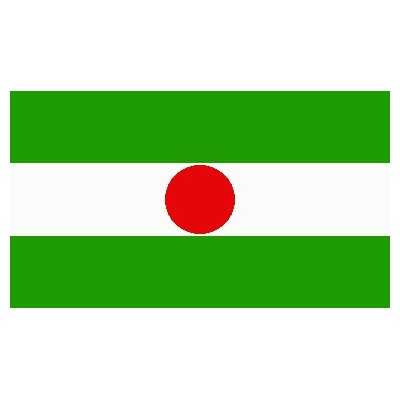


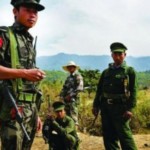
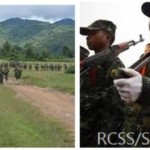
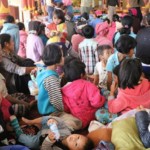
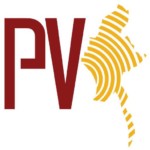
I am strong to read about Ta’ang history and PSLF/TÑLA in English languge. Could you send your up to date news via email to me? တာင္ေကးစူးဒါင္းခည္းခည္းေအာ…
Thank you for your interest. You can subscribe to feed for all English posts tagged with PSLF/TNLA at https://www.burmalink.org/tag/pslftnla/feed/.